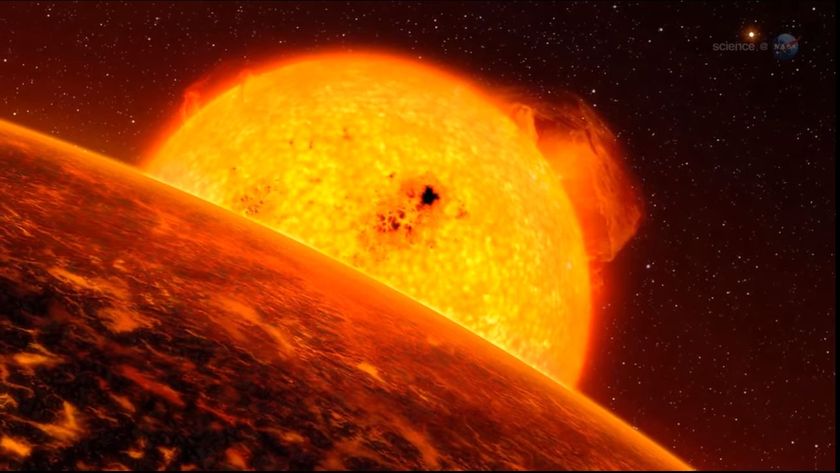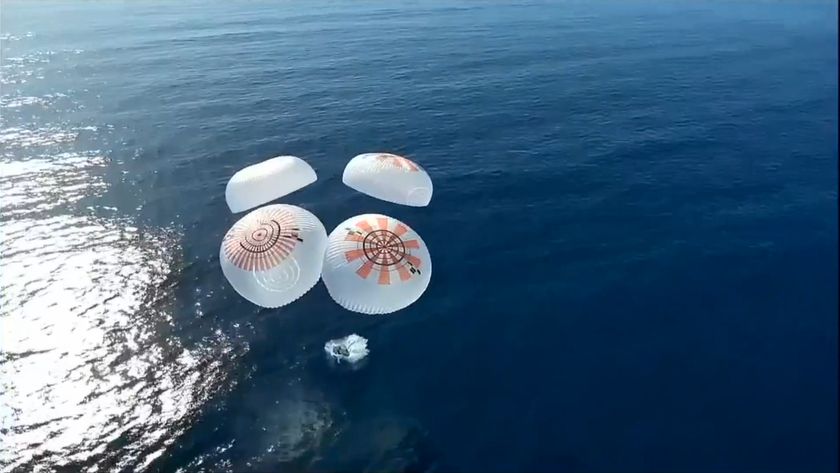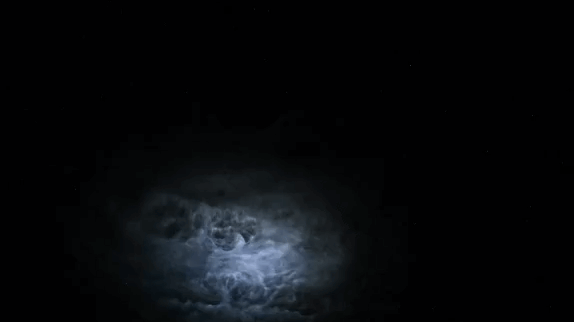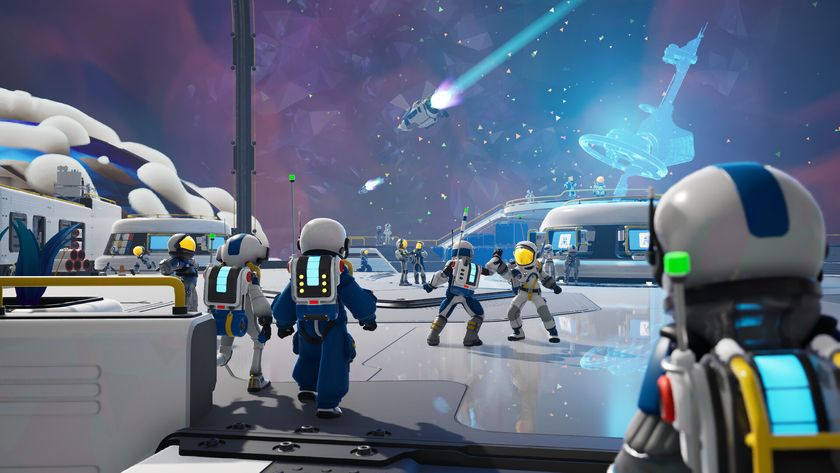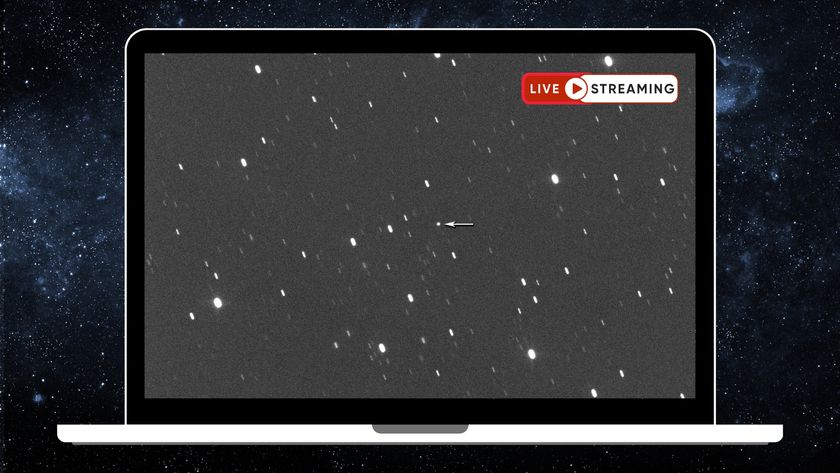Nuclear Sphere: Weird Globe Could Revolutionize Fusion Energy
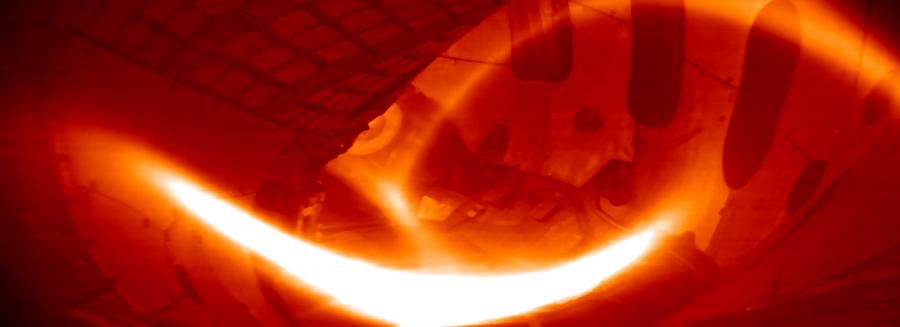
A team of researchers has a plan to achieve nuclear fusion that actually produces energy, and their proposal looks very different from the fusion projects the world has already seen.
If the team is right, its strange, spherical hydrogen-boron reactor could be built in useful form before any ongoing conventional fusion projects reach completion.
The secret behind the new reactor design? It relies on completely different elements than older projects do, and it uses different methods to heat up its core. [The 8 Hottest Places on Earth]
Elusive power source
There's a lot of energy locked away inside atoms.
Much of that energy makes up the binding forces that hold atoms together. Physicists have known for most of the last century that they could tap into that energy by splitting those bonds. That reaction, atomic fission, has been deployed to destroy the cities of Hiroshima and Nagasaki, as well as to power every nuclear reactor that exists in the world today.
But it turns out that the reverse reaction, atomic fusion, is even more powerful (it is the reaction that powers the sun, after all). While fission reactors usually split very large atoms, like uranium or plutonium, fusion reactors aim to smash very light atoms together. Typically, those nuclei are heavy isotopes of hydrogen, such as deuterium and tritium, meaning they have extra neutrons. They fuse to form helium, releasing massive amounts of energy in the process.
All the largest known weapons in the human arsenal are fusion bombs, also known as hydrogen bombs, that smash deuterium and tritium together to release massive explosions and flashes of radiation. However, no useful fusion reactors exist. Every model that has been built uses up more energy sustaining the hot plasma necessary for the fusion reaction than the model produces in electricity.
Get the Space.com Newsletter
Breaking space news, the latest updates on rocket launches, skywatching events and more!
Still, many researchers argue that once net-positive nuclear fusion is achieved, it will offer a source of functionally unlimited energy, with transformative effects for the global energy economy.
Game changer?
The new hydrogen-boron reactor is potentially a game changer for a simple reason: efficiency.
A deuterium-tritium reactor faces two challenges on the way to producing electricity: A lot of the energy gets wasted as atoms shed neutrons during the reaction, and the remaining energy can't be converted directly to electricity. Instead, it's used to heat up water, which turns a turbine, which produces electricity. So, most of the energy put into the reaction can't be efficiently translated into usable electricity.
But in the new study, which was published Dec. 12 in the journal Laser and Particle Beams, Heinrich Hora, a physicist at the University of New South Wales in Australia, and colleagues argued that they can sidestep these challenges by using a completely different fusion reaction.
If you fuse hydrogen-0 (just a single proton with no neutrons or electrons) and boron-11 (a version of boron with six neutrons) to make three helium-4 nuclei (each containing two protons and two neutrons), the researchers wrote, no neutrons get wasted. The atoms combine cleanly without losing any of their core particles. And in the reactor Hora proposes, the energy of the plasma could be converted directly into electricity without wastefully heating up water along the way, because the fusion's energy is released as a stream of electrically charged particles, which can relatively easily be turned into current in a wire.
Unlike deuterium-tritium reactors, which hold superheated plasma in place using magnets inside donut-shaped chambers, Hora's spherical hydrogen-boron reactor uses lasers to trigger and sustain the reaction. Those lasers are critical, Hora said: They waste much less energy heating up the atoms in the plasma and use less energy keeping the atoms in place. [5 Everyday Things that Are Radioactive]
The lasers allow the hydrogen-boron plasma to reach temperatures of 5 billion degrees Fahrenheit (3 billion degrees Celsius) and densities 100,000 times greater than those of the plasmas inside a deuterium-tritium reactor. Those are much more intense reaction conditions than other projects aim for, but Hora and his team wrote that it should be easier to achieve these conditions given current technology, at least according to the researchers' early experiments and simulations.
The spherical shape, meanwhile, would allow the superhot plasma to retain a more efficient cylindrical shape at its core, which makes it an ideal target for the cylindrical laser. A spherical shape also efficiently retains the energy produced by the fusion reaction, the researchers said.
No energy-positive fusion reactor of any kind yet exists. But this is the type of early work that might one day make it happen.
Originally published on Live Science.
Join our Space Forums to keep talking space on the latest missions, night sky and more! And if you have a news tip, correction or comment, let us know at: community@space.com.

Rafi wrote for Live Science from 2017 until 2021, when he became a technical writer for IBM Quantum. He has a bachelor's degree in journalism from Northwestern University’s Medill School of journalism. You can find his past science reporting at Inverse, Business Insider and Popular Science, and his past photojournalism on the Flash90 wire service and in the pages of The Courier Post of southern New Jersey.






